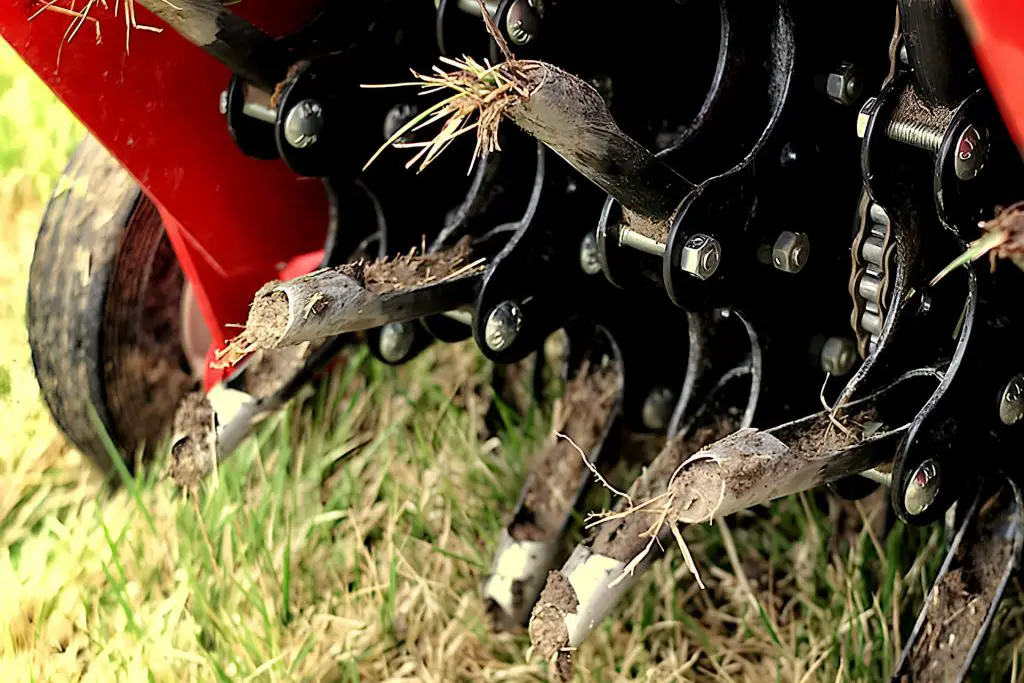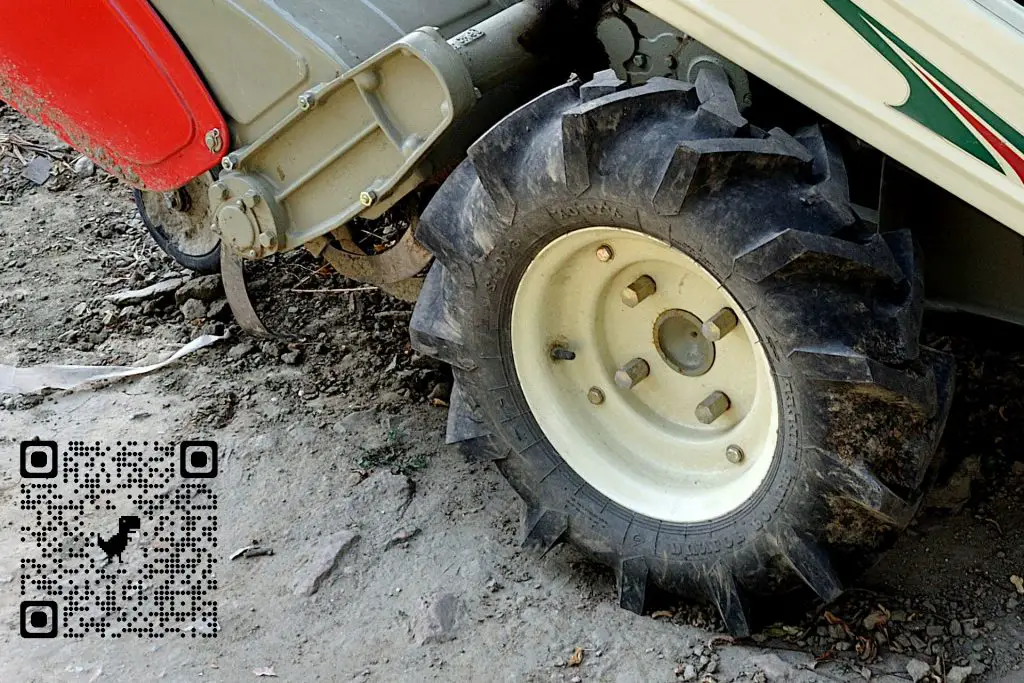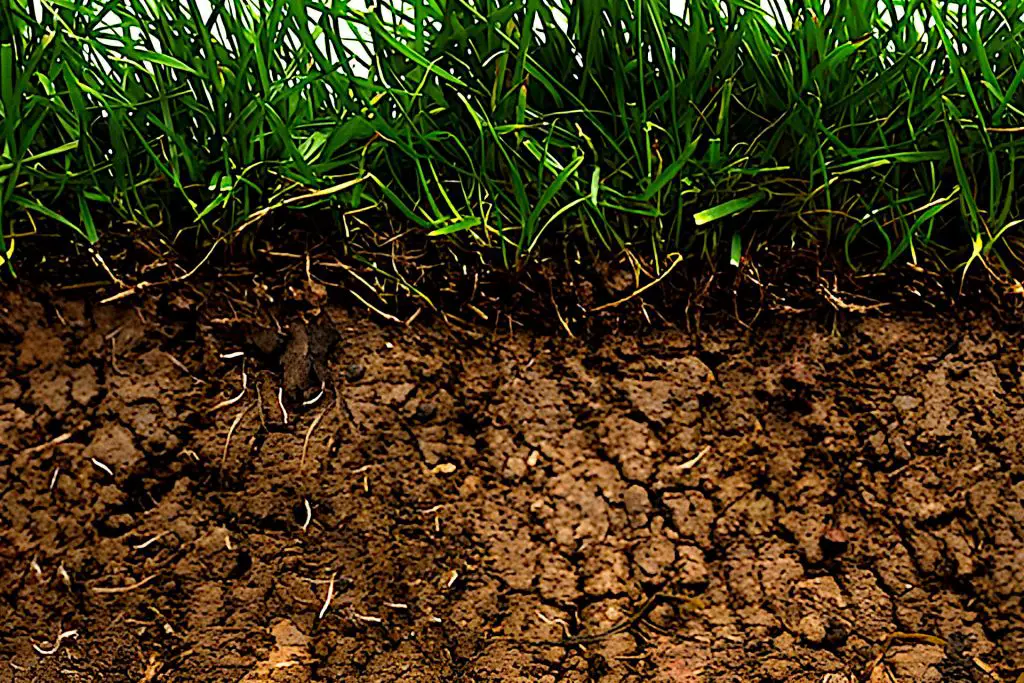Should You Rototill Your Lawn Before Seeding
The question of whether you should rototill your lawn before seeding is one that can produce a diverse set of opinions. Obviously, there are those that advocate rototilling before seeding and those who are vehemently against doing so. But as often in the case of diverse opinions the decision to till or not is more nuanced and will vary from project to project.
Both schools of thought regarding rototilling, before seeding your lawn, have a certain amount of logic and thus your decision to rototill or not will be based on which applies best to the condition of your ground and soil.
We will look at why you might want to rototill before seeding and also circumstances as to why you might not. We will look at how to till properly to get the best results and also what happens if you don’t till properly.
What is the Purpose of Rototilling

Rototilling is a traditional method for preparing the soil for planting. It involves turning over the top layer of soil, loosening the soil, and aerating the soil. The main argument for rototilling the ground before seeding the lawn is that the process improves grass establishment and growth, leading to a healthier finished lawn.
There are several reasons why gardeners have traditionally tilled before seeding a lawn. The main purpose of this process is to allow air to reach the roots of plants. This is particularly important where the soil has become compacted which can often happen with heavy clay soils.
In addition to hindering air from reaching the roots of the grass, in heavily compacted ground, the grass roots can find it difficult to extend deep enough when establishing themselves. This results in a relatively shallow root structure which can ultimately have an impact on the health of the lawn.
By tilling the ground you are breaking up the ground under the topsoil by around six inches and in doing so not only will it aid airflow but improve drainage and allow the grass seed to dig deep root canals when establishing itself,
A further advantage of tilling before seeding the lawn is it enables the fertilizer and or compost, that you will put down, to penetrate deeper into the ground, passing nutrients deep into the soil, which helps the soil’s ecosystem. The result should be that the germinating grass seeds can more easily establish themselves with the roots being able to penetrate deeper creating a stronger root structure, which will help the new grass thrive.
Types of Rototillers
There are a variety of different types of rototillers but broadly they can be split into two categories, front-tine tillers and rear-tine tillers. The choice of which you should use is likely to come down to the size of the lawn that needs tilling, the nature of the ground to be tilled and, of course, cost.
Front-Tine Tillers

Front-tine tillers are designed to work only in the front row of plants. They usually have three blades attached to a rotating shaft at the end of a long handle. They tend to have narrow path widths which can mean a lot of passes are required.
The most common type of front-tine tillers is walk-behind models. Walk-behind models can be operated by hand or foot pedal. This type of front-tine tiller is best suited to small gardens since they don’t provide enough power to move large amounts of soil. The lack of power can also cause uneven tilling as the blades can bounce around on difficult hard surfaces.
This type of tiller is best suited to preparing a garden bed for planting seedlings or young plants and is unlikely to be suitable for preparing to seed a lawn.
Rear-Tine Tillers
Rear-tine tillers have their blades attached to a rotating steel shaft. These tillers work well when loosening the soil in rows where there are mature plants. They’re also useful for breaking up compacted soil.
Machines with tines at the rear are often better at breaking up untilled soil and cutting deep into densely compacted earth. They often feature robust large treaded tires and have variable depth regulators, allowing you to till to various depths.

Some of the better rear-tine tillers counter-rotate. In doing so they provide you better control in tilling the hardest ground because of their counter-clockwise rotation. When chopping through difficult ground rear-tine tillers produce much less vibration, and they are a much better for rototilling a lawn before seeding.
Mid-Tine Tillers
You can also get mid-tine tillers although these are far less common. On a mid-tine tiller, the engine or motor is situated above the blades providing a better-distributed weight. The advantage of this set-up is that the weight of the motor or engine helps with controlling the machine.
The downside of these machines is that they are generally less powerful than rear tillers but are often as expensive.
Gas or Electric Rototillers: Cost Power Trade-Off
In general, electric rototillers are less costly than tillers fueled by gasoline. Indeed, you should be able to find electric tillers at reasonable prices, the trade-off, however, is they will lack the power that gas tillers deliver. This may or may not be important, depending on the nature of the ground to be tilled, but poorly till ground itself can create problems.
How to Till a Lawn Before Seeding
The first thing you need to do is evaluate the ground, test the soil and decide on a rototiller best suited to the job. Compared to front-tine tillers, a rear-tine tiller has greater power and is better suited to working in difficult terrain.
Tilling performance is also influenced by the temperature of the soil. Before you begin tilling, wait for the soil to reach a temperature of 60 degrees Fahrenheit. Take a trip around the area to remove any material that might be snagged or flung by the tines of the tiller. This includes pebbles or sticks.
You would set the depth of the blade to between four to six inches. If there is a slope you will need to adjust more or less at different points on the slope, but the objective is to try to have a uniform depth across the whole area.
On reasonably level ground, you would till the ground working in a systematic fashion, in rows along the longest section of the area to be tilled.
Grading Soil After Rototilling
The procedure would be different if the ground you were seeding had a slope, particularly if the ground sloped toward buildings. In this case, you would look to grade the ground when tilling adjusting the depth of the tilling blades according to the slope.
In general, grade refers to the ground level or elevation at any particular position. In terms of ground preparation for seeding a lawn, it is the act of adjusting the slope of your yard so that rainfall and other water runoff drains away from your home’s foundation, rather than toward it.
Rototillers can help make grading on gentle slopes less arduous by moving the tilled soil from the top of a slope to the bottom. You would till at a deeper depth on the top half of the slope and adjust the blades to a shallower depth on the lower part of the slope. You would then rake some of the soil from the top of the slope to level up the ground, and create a roughly even tilled depth. Once done this should ensure water runs off, away from buildings.
If there are steep slopes the process is going to be different. You read here more about leveling up your yard.
Why are Some Gardeners Against Rototilling Before Seeding a Lawn?
There is a counter view held by some gardeners and lawn contractors that rototilling before seeding a lawn can harm the eventually finished lawn.
The main arguments tend to focus on the fact that tilling can produce uneven lawns, that the process encourages the propagation of weeds and that the soil ecosystem is degraded. There is some logic to these arguments and we will look at each one in detail.
Rototilling Can Produce Uneven Lawns
There is no getting away from the fact that rototilling is essentially a farming process. In terms of breaking up plant beds, it is an excellent solution but if you are looking for a flat even lawn, you can have problems.
Problems can begin to occur if the ground is particularly difficult and you don’t use a powerful enough tiller. The blade can have a tendency to bounce up causing the tilling depth to be uneven.
What remains is an uneven sub surface soil profile that runs up and down the length of the yard. Naturally, after finishing with the tiller, you would grade the surface. As a consequence, the depth from the ground to the hard soil underneath varies across the yard.
The problem is that the loose top couple of inches of soil, will, over time, resettle at varying depths, typically following the profile of the hard subsurface soil. This will lead to an uneven top surface which will get worse over the first couple of years as the soil is continuing to look for support.
Rototilling Leads to the Propagation of Weeds
Another argument that is sometimes put forward against rototilling a lawn before seeding is that the process can cause deep-lying weed seeds to be distributed over a wide area during the tilling and grading process.
Again there is truth in this and the problem is that even if you put down glyphosate this won’t destroy the weed seeds or any grass seeds as it is designed to attack the plant and not the seed.
A counterargument is the time of year. Weeds are generally less able on germinating in cooler late fall conditions. If you can get your timing right you can till and put down the grass seeds in late fall. Grass will germinate quicker and you should be able to choke out the weeds. This would work best with cool-season grasses.
Rototilling Degrades the Soil Quality
There is an argument that tilling and cultivating degrades the soil’s ecosystem. This happened because the microbes in the soil are being disturbed and nutrients are being lost from the soil.
A secondary issue is that in some circumstances tilling could lead to soil erosion through the breaking down of the soil and consequential loss of moisture ( caused by more of the surface area of the soil being open to the air).
Both of these, although real issues are not as problematic as lawn level and propagation of weeds. They can in fact be dealt with fairly effectively using the right soil amendments or by using hydroseeding as the seed distribution process.
Both solutions work by feeding the soil nutrients through fertilizers and compost helping the ecosystem stabilize and re-energize. Hydroseeding lays down a thick wet mulch containing water infused seed and fertilizer, together with tackifier to help with loose soil and erosion.
Alternative Solutions to Rototilling a Lawn Before Seeding
The first question to ask is do you need to rototill? By that we mean, what is the actual condition of your soil. If you have sandy, loamy or chalky soil then there is far less chance of compaction in the first place the and benefits of tilling might be substantially reduced. Before starting the project you should in any event, have your soil tested so that you know the nature and nutrient composition of the ground.

As the object is to create a healthy, thriving new lawn, you may well find that with these less compactible soils tilling isn’t necessary. Just kill off all the vegetation, add your amendments then seed over. The germinating seeds will be able to root reasonably easily if the soil isn’t too compacted.
One interesting solution that is touted is to actually seed over first, then kill off all existing grass and weeds. The weed killer won’t affect the seeds and will quickly dissipate. The seeds, as they germinate, will then be able to use the existing root canals of the previous vegetation to help establish themselves. The dead vegetation remains on top forming a mulch that will decompose as the grass grows
Should You Rototill Your Lawn Before Seeding
We have looked at the arguments for and against rototilling before seeding. Both arguments have their logic and the decision that you take is likely to come down to several factors
The most important factor to consider in deciding whether or not to rototill a lawn before seeding is the type and nature of the soil. If it is sandy, loamy or chalky, and is not compacted, you won’t need to till. If, though, the soil is clay or very compacted then you will need to till. The key is that if you have to till you do so to an even depth and grade properly to avoid the lawn eventually becoming uneven.
If you take the course of tilling then ensure you have a machine that is powerful enough to do the job well. That you add sufficient fertilizer, compost and or topsoil to boost the nutrient level of the soil and that you kill off existing vegetation. Doing this will prevent most of the problems associated with tilling.
Summary:
As we have seen there are reasonable arguments on both sides of the till or not to till debate. The purpose of rototilling is to improve grass establishment and growth . In short, rototilling should be done to improve the quality of the soil and makes it easier for the grass seeds to absorb nutrients. One thing to remember is that tilling can be quite physical and arduous work. You really don’t want to be starting on this course unless you absolutely need to. If your soil is not too compacted then don’t till.
However, tilling is also not the problematic process that some claim if done properly. This is the important point. The success of rototilling your lawn before seeding comes down to your ability to till evenly, which in itself, is mainly the result of having a capable enough machine to do the job. The small front-tine tillers that you till your plant beds with won’t be good enough. Rent an adequate machine that will do the job.
